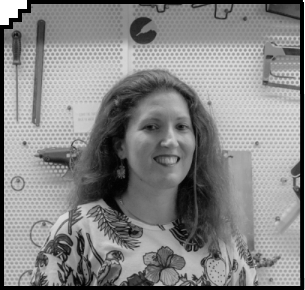NFT : The Biggest Dilemma in Technology Today

by
by İpek Yeğinsü
Published July 1, 2022
Nowadays, technology is one of the concepts we all mention most frequently. Perhaps for the first time in history, we experience so much difficulty trying to keep up with the exponential pace of technological developments. Ray Kurzweil, a futurist and one of Google’s executives, explains the reason behind this phenomenon in his article titled “The Law of Accelerating Returns” (2001): “We won’t experience progress worth 100 years in the 21st century — it will be more like 20,000 years (at today’s rate).”¹
The massive increase in internet bandwidth and computing capacity that took place during the 2000s has had a tremendous impact on both the speed and the intensity of telecommunication. According to the World Economic Forum, while only 7 percent of the world’s population had internet access in 2000, this rate is currently close to 50 percent. Similarly, 740 million mobile phone subscribers existed in the world during the early 2000s while now the figures have reached over 8 billion subscriptions, i.e. more than the total number of people on Earth.

Such widespread availability of the internet and mobile device usage have also facilitated access to social media platforms. By 2018, Facebook’s user numbers reached 2.26 billion, while Instagram’s population reached 1 billion.² As a result of their rapidly increasing number of users, these platforms quickly became the key channels for marketing and advertising; this, in turn, played a vital role in e-commerce’s growing share in the pie. Forbes predicts that by 2022, the total volume of the global e-commerce market will reach $6.54 trillion. According to Nasdaq’s data, by 2040, 90% of all purchases will take place online.³ Some experts even claim that the future of commerce lies in social media, indicating the establishment of Facebook Shops as evidence. ⁴
With the digital shopping frenzy, the creation of medium-specific and reliable value systems has become inevitable, and Blockchain is one of the most important developments in this regard. Blockchain technology is defined as “a shared, immutable ledger facilitating the recording of transactions and the tracking of assets in a business network.” These assets can be “tangible (house, car, cash, land)” or “intangible (intellectual property, patents, copyrights, branding)”. ⁵ And, undoubtedly, NFT is the intangible asset type occupying the top of our current agenda.
According to the World Economic Forum, while only 7 percent of the world’s population had internet access in 2000, this rate is currently close to 50 percent.
NFT : The Rebellious Youth of the 21st Century

Stored on the blockchain, NFT validates the authenticity of a digital asset.⁶ It stands for “non-fungible token” or “non-tradable token”; in other words, it is not interchangeable. For instance, each 10-pound note in your wallet has the same value as any other and can be used interchangeably. Or, if you took a friend’s 10-pound note and gave him or her one of yours in return, it would not make any difference for either of you. But let us imagine each of these banknotes carries a unique stamp of “authenticity” making interchangeability impossible. And every time a banknote changes hands, the information regarding the parts of the transaction is recorded directly onto the banknote itself. This is exactly what NFTs enable us to do. An NFT carries with it a record of every transaction it is part of. Put differently, in spite of being a digital asset, its authenticity and uniqueness are always assured.
Evidently, art is one of the areas most impacted by NFT. Digital technology turned the problem of the “copies without originals”, debated since W. Benjamin’s renowned article “The Work of Art in the Age of Mechanical Reproduction” (1935), into an even bigger crisis. In fact, this is the exact problem that NFT is able to solve. Since the data documenting the authenticity of an artwork is stored across multiple locations in the network (distributed database) instead of a single location, it cannot be stolen or lost. This allows the art professionals and collectors to trace an artwork’s provenance more easily. Even more importantly, every time an NFT changes hands, the artist receives a certain amount of profit from that transaction; this may allow an artist who is overlooked or not represented by a bluechip gallery to advance their career without necessarily establishing institutional ties. Consequently, the art market assumes a decentralized character no longer dominated by those professionals often referred to as “gatekeepers”.
Yet, the possibilities offered by the NFTs do not always serve a good purpose: scammers also exist who use them to launder money and to sell stolen works. However, such cases of illegal transaction also take place in offline shopping, and they do so rather frequently. On the other hand, NFTs’ impact on ecological balance is much more controversial. The creation of NFTs using the Ethereum blockchain infrastructure significantly contributes to the carbon emission rates. But, at the same time, they dramatically reduce natural resource consumption and carbon emissions associated with the logistics operations and the usage of physical materials. Let us assume you are an artist based in Turkey producing heavy, large-scale sculptures, and you have been invited to do an exhibition in the USA. Considering the items in your to-do-list such as casting your sculptures, packing them for safe transportation, shipping them to the USA following the insurance and customs clearance procedures and bringing them back to Turkey, – all while covering your and perhaps a few of your colleagues’ travel expenses– exhibiting your works as NFTs can save you from all these procedures while also preserving the natural resources that would have been consumed for each. Meanwhile, some initiatives also exist that aim at minimizing the NFTs’ carbon footprint.⁷ If these endeavours are a success, it is highly likely that NFTs negative impact on the environment will cease to be a problem in the near future.
Technology: The Two Sides of The Medallion
The Turkish Language Association defines technology as:
The knowledge of application in an industrial branch regarding construction methods, tools and equipment and the latter’s usage patterns, the science of application; Tools made by humans to control and transform their material environment and all the knowledge pertaining to these tools.⁸
According to the Cambridge Dictionary, the word “technology” refers to “(the study and knowledge of) the practical, especially industrial, use of scientific discoveries”.⁹ Both definitions emphasize two fundamental characteristics of technology: that it is based on scientific or practical knowledge, and that this knowledge shapes our objects and practices.¹⁰ However, it does not make any ethical assumptions regarding the purpose behind this shaping. Imagine a prehistoric man finding a flat stone with a sharp edge. Let him realize or even “learn” that he can use it to change his material environment. Would his future actions with the stone make the stone or its sharpness either “good” or “bad”?
According to the Cambridge Dictionary, the word “technology” refers to “(the study and knowledge of) the practical, especially industrial, use of scientific discoveries”.
Science and technology are social phenomena. Developments within this context open up new territories the effects of which necessitate thorough debate and ultimately social consensus. The nature of these effects depends first and foremost on the purpose and direction of the “control and change” that individuals, societies or institutions intend to create in their “material environments”. What is more, while some of these effects are predictable, others are quite random. A drug becoming functional in a different medical field due to its unexpected side effects is a good example for it. It is as unrealistic to expect NFT to solve all of humanity’s problems as it is unnecessary to regard it as an evil invention. We shall accept that NFTs will have complicated social effects like does any other technological development, and a correct evaluation of these effects will require some time. It is the common responsibility of all the individuals and institutions operating in this territory to be aware of the areas of uncertainty and to contribute as much as possible to the processes aimed at bringing ethical standards to these practices. Considering all this, I think NFT, the rebellious youth destroying the value systems we have taken for granted for centuries, deserves a chance.

¹https://www.kurzweilai.net/the-law-of-accelerating-returns
²https://www.weforum.org/agenda/2020/11/heres-how-technology-has-changed-and-changed-us-over-the-past-20-years/
³https://techjury.net/blog/how-fast-is-technology-growing/#gref
⁴https://www.smartbrief.com/original/2020/08/future-e-commerce-social-media
⁵https://www.ibm.com/tr-tr/topics/what-is-blockchain
⁶https://www.reuters.com/technology/what-are-nfts-2021-11-17/
⁷https://time.com/6120237/nfts-environmental-impact/
⁸https://sozluk.gov.tr/
⁹https://dictionary.cambridge.org/tr/s%C3%B6zl%C3%BCk/ingilizce/technology
¹⁰A significant portion of the ancient Greek philosophers defines the field of knowledge (theory) as “episteme” and practice as “techne”. However, some use both words to refer to the field of knowledge. After all, practice is one of the ways leading to knowledge.
